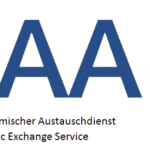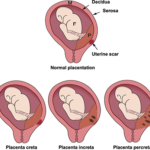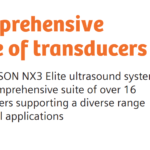Leadership for Africa” Programme for Chad, DR Congo, Niger, Nigeria, and Togo: Master’s Degree Scholarships in Germany Are you a young national scholar or a refugee from Chad, DR Congo, Niger, Nigeria, or Togo seeking to advance your academic qualification in Germany? The “Leadership for Africa” (LfA) scholarship programme aims to support you in your academic journey. The … [Read more...] about DAAD Leadership for Africa Scholarship: Eligibility, Benefits, and Selection Process
Test Preparation: Mastering NCLEX-RN Alternate-Format Questions: A Guide for Nurses
Test Preparation: Mastering NCLEX-RN Alternate-Format Questions: A Guide for Nurses 7 Alternate Item Formats on the NCLEX: Understanding the Different Question Types and Their Significance Aspiring nurses who are preparing for the NCLEX often wonder about the different types of questions they will encounter on the exam. While many questions on the NCLEX are standard … [Read more...] about Test Preparation: Mastering NCLEX-RN Alternate-Format Questions: A Guide for Nurses
Exploring the Fake GPU Videos of Captains Workspace on YouTube: Cleverly Crafted Pranks
Captains Workspace is a YouTube channel that has become famous for its annual tradition of uploading videos featuring fake graphics processing units (GPUs) every April 1st. Despite the fake nature of these videos, they have amassed a significant number of views and have become somewhat of a sensation in the tech community. In this article, we will take a closer look at Captains … [Read more...] about Exploring the Fake GPU Videos of Captains Workspace on YouTube: Cleverly Crafted Pranks
Comprehensive Guide to Placenta Location and Placenta Previa Types: What You Need to Know
Understanding Placenta Location: Implications for Pregnancy and Delivery - A Comprehensive Table Guide Fundal: Refers to the top portion of the uterus, which is typically where the placenta is located during a normal pregnancy. Anterior: Refers to the front wall of the uterus, which can be a location for the placenta to attach. An anterior placenta can sometimes make … [Read more...] about Comprehensive Guide to Placenta Location and Placenta Previa Types: What You Need to Know
Selectable Frequencies and Transducers for the Siemens ACUSON NX3 Ultrasound System
Selectable Frequencies and Transducers for the Siemens ACUSON NX3 Ultrasound System The Siemens ACUSON NX3 Ultrasound System offers a variety of selectable frequencies and transducers to provide high-quality imaging for various applications. With up to 18 transducer ports, the system supports a wide range of clinical specialties, including radiology, cardiology, obstetrics, … [Read more...] about Selectable Frequencies and Transducers for the Siemens ACUSON NX3 Ultrasound System



